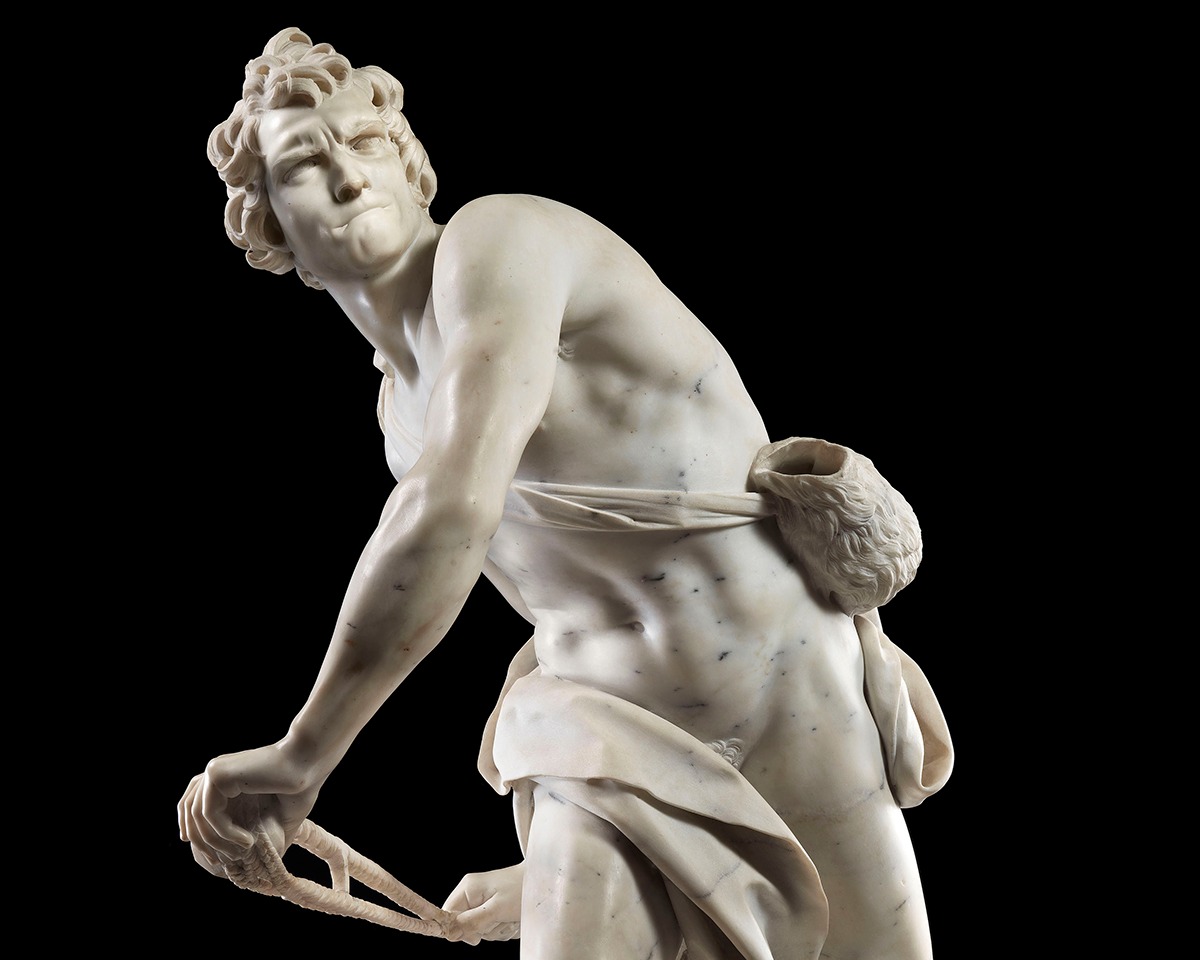GALLERIA BORGHESE TELLS A MASTERPIECE: THE DAVID OF BERNINI

David is one of the four sculptures executed by the young Bernini for Cardinal Scipione Borghese. The artist worked on the statuary groups for the Villa on the Pincio for seven crucial years during which his brilliance, freedom, narrative bent, and delight in amazement blossomed and then developed in all their power.
The work had been commissioned from Bernini by Cardinal Montalto for his villa in 1623. The cardinal’s untimely death blocked the commission, but Scipione Borghese decided to take it over. Bernini interrupted his work on the Apollo and Daphne, dedicating himself to this new sculpture, which – according to Baldinucci, one of the artist’s first biographers – he finished in only seven months of work.
The only one of the four Borghese sculptures that has a Biblical subject, it represents the moment in which the young hero is about to hurl the stone at the giant Goliath. Traditionally, David was portrayed standing, often with Goliath’s head at his feet. Even Michelangelo had represented his David standing firmly as he is preparing to face the enemy. Bernini, instead, changed the then current iconography, portraying David in action, with his body twisted and unbalanced. Defying the static limits of marble, Bernini shifts the center of mass onto the right leg, which becomes the pivot of the rotation. The entire body is straining with palpable tension culminating in the sling, which is stretched as far as it can go: so stretched that viewers facing the statue exactly in Goliath’s place feel emotionally involved and “see” the launch of the stone in their imagination. A superb narrator, Bernini manages to summarize the entire biblical story in a single image. In effect, between David’s legs we see the armor that Saul, the King of Israel, had given him to protect himself from the giant, but the youth is not wearing it; it is cumbersome, and therefore has been left lying on the ground. In this position, the armor also has a static function. Bernini uses it to give the statue a third foothold and to balance the daring pose.
Next to David’s feet is the cithara on which, after his victory, he will strike up a psalm of thanksgiving to God. The instrument is decorated with an eagle’s head. Since the eagle and the dragon were the Borghese family’s armorial animals, this detail can be interpreted as a reference to Bernini’s patron, Cardinal Scipione, and his desire to revive his family’s glory after the papacy of Gregory XV Ludovisi, who had not been very favorable to it, and who died in July 1623, only a few months after the statue had been commissioned.
Determined and tense from straining, David’s face is Bernini’s self-portrait. Baldinucci recounts that Cardinal Maffeo Barberini – the future Urban VIII – delighted in holding the mirror with which the artist was portraying himself. The sculptor’s identification with the biblical hero is deeply significant. Bernini portrays himself as a determined, leonine fighter who challenges a giant and defeats him. He not only challenges the block of stone –transforming it into flesh, tendons, and rope – but also the cyclopean shadow of Michelangelo and his David, which Bernini assailed with his innovative furor and his ambition.